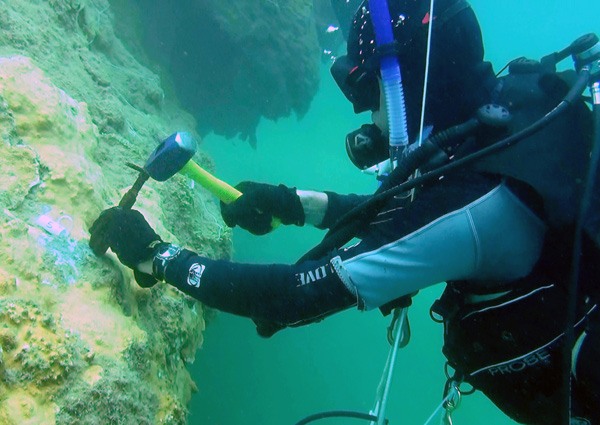LIHUE — A year and a half after a U.S. Geological Survey report described Kauai’s coral disease outbreak as an “epidemic,” the state Department of Land and Natural Resources said Tuesday it will lead an investigation to identify research and
LIHUE — A year and a half after a U.S. Geological Survey report described Kauai’s coral disease outbreak as an “epidemic,” the state Department of Land and Natural Resources said Tuesday it will lead an investigation to identify research and treatment options.
It is the first time that DLNR’s Division of Aquatic Resources has formed a management response team to address coral disease, according to officials.
DAR Administrator Frazer McGilvray said that when the department first learned of the black band disease, it acted to support ongoing research by the University of Hawaii and USGS.
“Now we’re able to apply that information to the next step,” he wrote in an email Tuesday. “Because this issue is high priority we are now forming this team.”
The Kauai Management Response Team, which includes partners from the National Oceanic and Atmospheric Administration, the Environmental Protection Agency, USGS and UH, began meeting in January. Earlier this month, DAR called together its partners for a third time to address the ongoing outbreak.
The team is tasked with reviewing the latest data about the disease, identifying the next steps in research and considering management options, according to a release. To do so, the DAR is actively implementing its Rapid Response Contingency Plan, which provides the division with a framework to respond to these types of events.
Tuesday’s announcement was welcomed by those who have been studying the disease from the get-go.
Greta Aeby, a coral expert with the Hawaii Institute of Marine Biology at UH, who was instrumental in developing the RRCP, has traveled to Kauai several times to study the disease and now serves on the management team.
She called DAR’s decision to lead a management team as a “step in the right direction.”
Aeby compared the situation facing Kauai’s reefs to someone discovering that the foundation of their house has started to crack. You don’t just shrug your shoulders, you work to fix the problem, she said.
“To me this is all good news,” Aeby said. “I say the more minds to ponder these things the better.”
Terry Lilley, a Hanalei biologist, videographer and Eyes of the Reef volunteer who first alerted scientists of the outbreak, said he couldn’t be happier about the collaborative effort. However, he wished it had happened two years ago, when he began sending out emails.
“I’m stoked, this is absolutely wonderful,” he said of the DAR announcement. “They just got a really late start on this, and it’s already in an advanced stage of killing the reef.”
Research indicates that the cyanobacterial disease outbreak is affecting three species of montipora, or rice, corals. It is predominantly on the North Shore and seems to be occurring in seasonal “hot spots” of infection, with Kee and Tunnels beaches having the highest levels of disease, according to DLNR.
“This information is essential to determine if there are appropriate management options that will facilitate the healing of the affected coral reef areas,” McGilvray said in a release.
Of 21 surveyed reef sites on Kauai’s North Shore, 18 — 86 percent — showed signs of the infection, according to DLNR.
Scientists, including Aeby, have already discovered that treating infected corals with a type of marine epoxy has been successful in stopping the disease’s progression.
Among those who will support the next stage of UH field work later this summer is Kauai DAR aquatic biologist Don Heacock.
The work will include additional surveys and collecting water, sediment and coral tissue samples to look for contaminants and toxins. Heacock said that while scientists have pinpointed cyanobacteria as the cause of the disease, they have not figured out the environmental stressor, or trigger.
“We don’t usually get sick unless we’re stressed,” he said, adding that corals are no different. “We need to find out right now, today, what’s causing this.”
DAR has also launched a reef response website, which includes information about coral disease and updates on the Kauai team’s progress.
“Corals form the foundation of Hawaii’s marine ecosystem,” DLNR Chairman William Aila said in a statement. “Statewide, Hawaii’s corals are relatively healthy, but with the negative effects of climate change we are likely to see events like the coral disease outbreak on Kauai more frequently. This is an important step in identifying effective management options that will help facilitate the healing of affected areas.”
• Chris D’Angelo, environment writer, can be reached at 245-0441 or cdangelo@thegardenisland.com.


